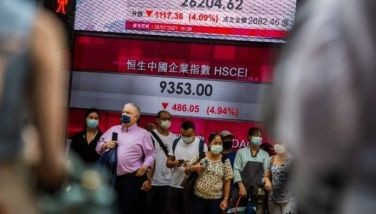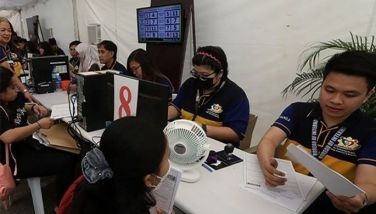Marcos and how he formed his economic team

Sept. 11 marks the 100th birth anniversary of Ferdinand E. Marcos. Once more, his presidency becomes topical.
Oral reminiscenses. Sometime in early 2015 , on the initiative then of the late Vicente T. Paterno (former senator, former industry minister and well-known businessman), five members of the economic team of former president Ferdinand Marcos met in four separate sessions in the course of two months, exchanging views, information and memories concerning their service in the government.
Including Paterno, the group consisted of former prime minister Cesar Virata, Placido L. Mapa Jr., Jaime C. Laya, and me. All of us played a role within the principal economic team contemporaneously, but not simultaneously. It was a very extensive exchange of views.
(In one of the meetings, Estelito Mendoza, from Marcos’s legal team, joined in the discussion to shed light on legal issues faced during the martial law period.)
Common strands in unique circumstances. One of the topics that came to light was how we were recruited into office initially. Each case was unique, both in time and in the official nature of service in the economic Cabinet.
But there were common elements in the circumstances of our appointments.
First, we were principally professionals, who first learned our craft from the formal training we received and subsequently from the unique experiences of our previous jobs.
All of us had received graduate schooling in the United States: Harvard (Mapa and Paterno), Wharton (Virata), MIT (Sicat), and Stanford (Laya).
Second, politics was practically absent when we were recruited into office. We were not political supporters or members of the party that helped in Marcos’s election. Political affiliation was not a consideration in our appointment.
Third, each one of us became active in recruiting other members of the economic team once we were in office. The president listened to our advice in this matter and supported us in our work.
The times were propitious for technocrats to be taken into high responsibility. When he was elected president, Marcos had followed in the footsteps of other models elsewhere. He was highly influenced by John F. Kennedy, US president from 1961 to 1963, who brought with him many professionals from business and from the academe when he took office.
The Macapagal boys. The case of Cidito Mapa was most unique given that he was a high official of the Diosdado Macapagal administration. He was the second top official of the Program Implementation Agency (PIA) that was created to support economic work in the Office of the President.
When Marcos defeated Macapagal in 1965, he opted for continuity in some critical work. Instead of abolishing PIA, Marcos gave the office a new name, the Presidential Economic Staff (PES) and appointed Mapa to head it. Mapa would move from that job to other government jobs: representative in the World Bank, head of the Development Bank of the Philippines (DBP)and Philippine National Bank (PNB).
By retaining PES and keeping Mapa, Marcos conserved important economic manpower that had been recruited in the government. Alejandro Melchor (who was to become executive secretary under Marcos) and Cesar Zalamea (who was to become DBP chairman) were promoted to deputies of the PES and were kept in the office.
Marcos did not appoint Armand V. Fabella, the chief economic adviser of Macapagal who was head of PIA. But he would later appoint Fabella to head the commission on government reorganization where the latter would continue to play a very useful role.
Virata et al enter. Midway in his first presidential term, Marcos had wanted to get a new economic manager who would deal with investments. The president’s radar screen had caught sight of Cesar Virata who was then dean of the UP College of Business and head of the SGV management consulting services.
At a threesome dinner in Malacañang with Mrs. Imelda Marcos, the president directly offered Virata a post to head an investment office yet to be formed in the Office of the President.
Virata accepted the offer, but suggested that he be integrated initially within the PES so as not to create any new office overhead. Thus, Virata became a deputy director-general of PES, along with Melchor and Zalamea.
After the Board of Investment (BOI) was created in 1967, Marcos appointed Virata as chairman of the new investment body. He organized the new body and filled it with new recruits, including Edgardo Tordesillas and Antonio Ayala.
But Virata’s work at BOI was interrupted by a major Cabinet reorganization in 1970 that affected him profoundly. He was made secretary of finance. The Cabinet reorganization also caused more openings for top level recruits into the government.
In 1970, Vicente Paterno and I would join the government almost simultaneously. Paterno would be appointed chairman of BOI and I would be made chairman of the National Economic Council (the national planning body then). Cesar Virata strongly suggested our names to Marcos.
Vicente Paterno came from the private sector. He was the principal treasurer of Meralco when he was recruited to become chairman of the BOI and, later, was made concurrent minister (secretary) of industry. (Meralco then was controlled by Eugenio Lopez, who would become the arch political enemy of Marcos.)
In my case, I was hired from the UP School of Economics. The day Cesar Virata told me the president wanted me to head the NEC was peculiarly amusing personally. My wife was on her way out the door to arrange our airplane tickets for my family of six as I met her to tell her of the possible change in plans. Since I had already accepted an appointment at the Yale University Growth Center, I had to reconsider in order to accept the honor of serving my own country.
This was a time when more new recruits into the government would come from the academe.
Jimmy Laya was the young dean of the UP College of Business when I got him interested in becoming my deputy at the National Economic and Development Authority (NEDA). When I brought him to Malacañang to introduce him to the president, Marcos decided to swear him into office.
Laya would become my deputy, but would move quickly as deputy governor at the Central Bank and later as secretary of the budget. He would also become Central Bank governor.
I tapped Manuel Alba to replace Laya as deputy at NEDA. At the time I recruited him to join as deputy director general, he was one of the directors in the East-West Center. But in a short while, when Laya was moved to the Central Bank as governor, Alba was also quickly appointed to the post of budget secretary.
My email is: [email protected]. Visit this site for more information, feedback and commentary: http://econ.upd.edu.ph/gpsicat/
- Latest
- Trending






























